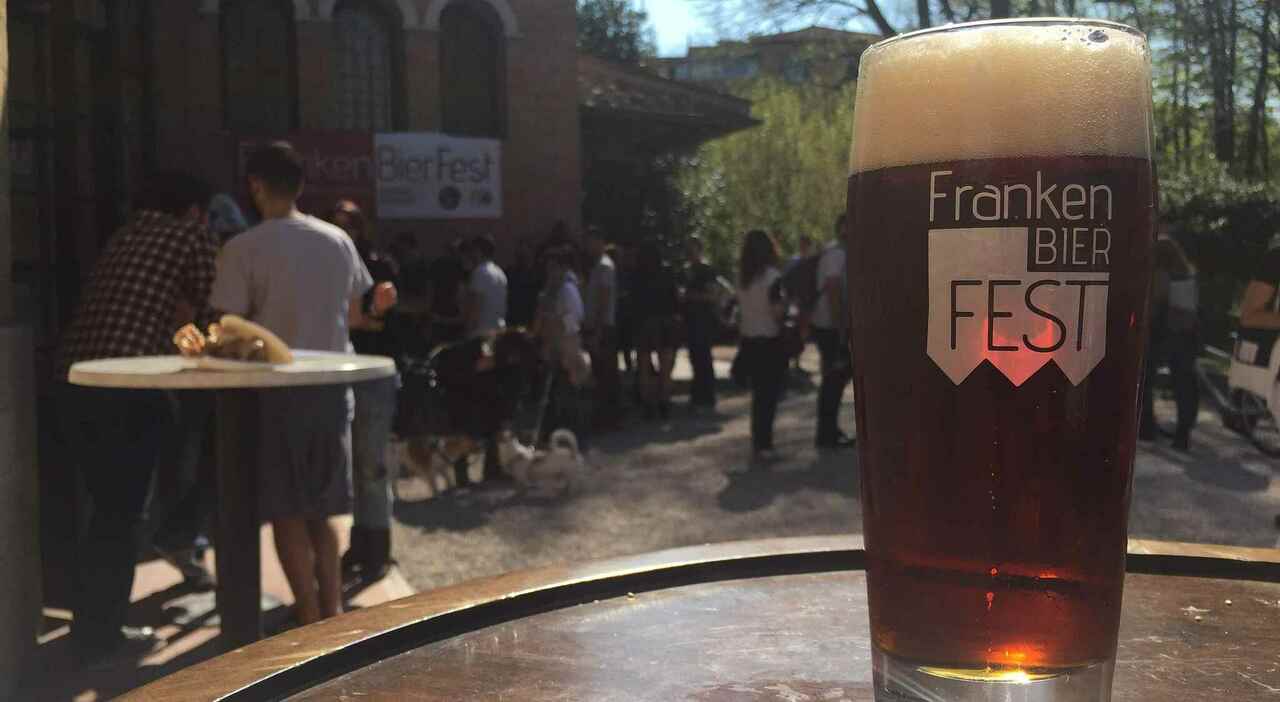Tuesday 9 April 2024, 15:10
A dive into the brewing, cultural, and culinary tradition of Franconia, a region in southern Germany: from April 12 to 14, the FrankenBierFest returns to the Limonaia of Villa Torlonia, now in its eighth edition, promoted and organized by 'Publigiovane Eventi' and 'Ma che Siete Venuti a Fa'. Franconia's beer, which boasts centuries-old 'recipes' passed down from father to son and whose secrets are jealously guarded by each producing family, is based on very rare, precious, and high-quality malts and hops.
Furthermore, Franconia is also famous for being the geographical area with the highest concentration of brewing activities in the world: it indeed holds the international record for brewery density on the territory, which are more than three hundred. Bamberg, for example, the capital of the region which at the same time is considered the capital of German craft beer, boasts over ten breweries for only 70,000 inhabitants: here the average per capita consumption is in fact over 300 liters of beer a year, compared to about 30 in Italy.
The productions of these microbreweries, moreover, are very limited: in most cases, they manage to just satisfy the needs of the local inhabitants and that is why, outside the German borders, they are very rare to find: in Italy, they have been imported for a few months and only thanks to the BierKultur Project promoted by Manuele Colonna, an expert connoisseur of the Franconian brewing scene, author of the book 'Beer in Franconia' and a well-known Roman publican, who selected all the beers present at the FrankenBierFest after careful and scrupulous research among the best local malts and hops. "This year, to tell the truth," explains Colonna, "we focused on even smaller realities than usual, including some municipal breweries that produce beer only twice a year in early last century facilities. We also got in touch with new brewing projects that keep the Franconian scene alive and that, while remaining traditional, bring a breath of innovation".
Inside the Franconian microbreweries, mostly family-run, there are also the so-called Gäststatte, inns where it is possible to taste the beers accompanied by typical local dishes - such as wurstels, schnitzel with kartoffelsalat, pretzels, and apple strudel - which will also be possible to try during the Villa Torlonia festival, prepared according to traditional recipes. Among the beer styles, at the Roman festival, it will be possible to find some prized beers, such as Rauchbier, with its typical smoky aroma and particular wood malting, and the very rare Kellerbier, defined as 'cellar beers' due to the brewers' habit of storing the barrels in the underground tunnels of the seven hills of Bamberg: during lagering, in fact, one of the production phases, the barrel cap is partially removed to allow carbon dioxide to escape and prevent the containers from exploding.
It is precisely this process that characterizes the true Kellerbier, 'flat' beers characterized by a well-defined 'hopping' and a decisive taste. For three days, thus, in the heart of one of the most famous parks in Rome, it will be possible to completely immerse oneself in an atmosphere from beyond the Alps, take a journey to discover the brewing and culinary tradition of the most remote villages of Franconia and Bamberg, and visit the photographic exhibition that tells, through images, the customs, traditions, and most folkloristic traditions of this corner of Germany.
© ALL RIGHTS RESERVED
This article is automatically translated
